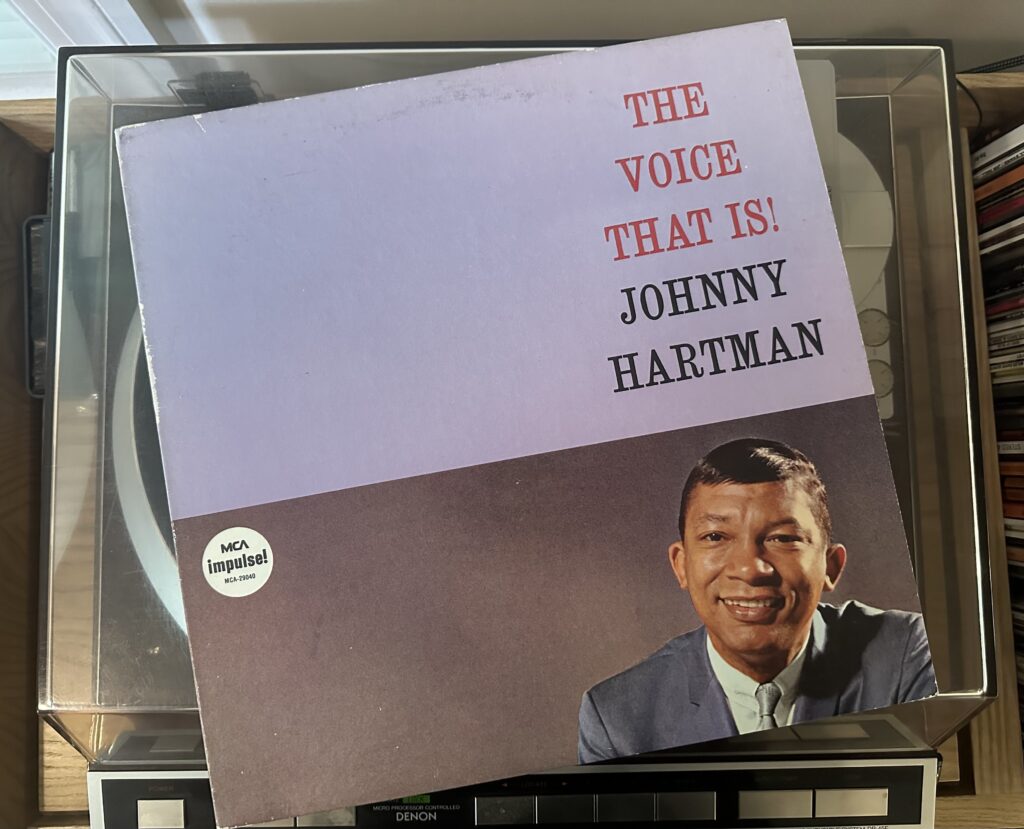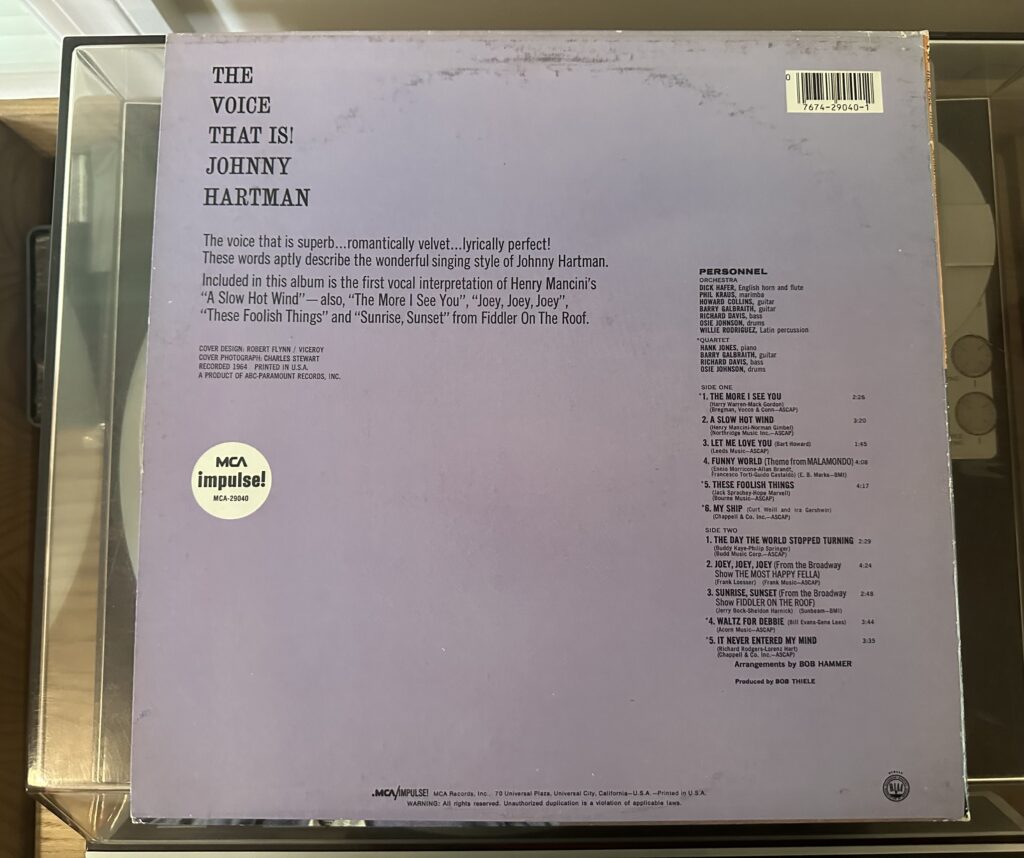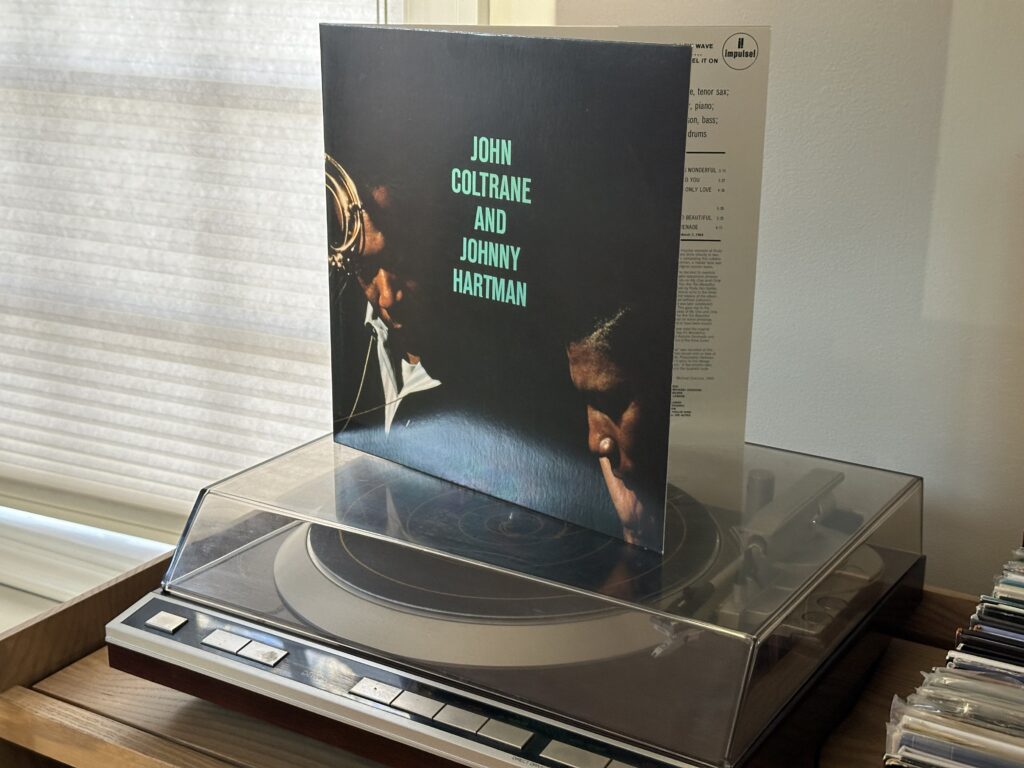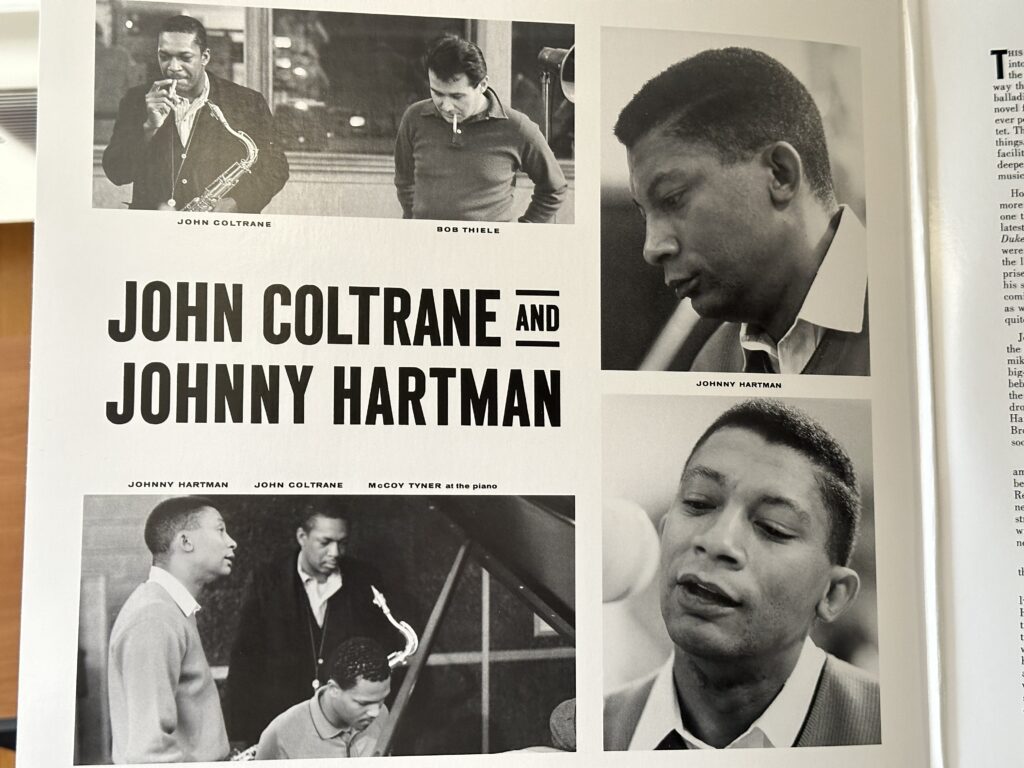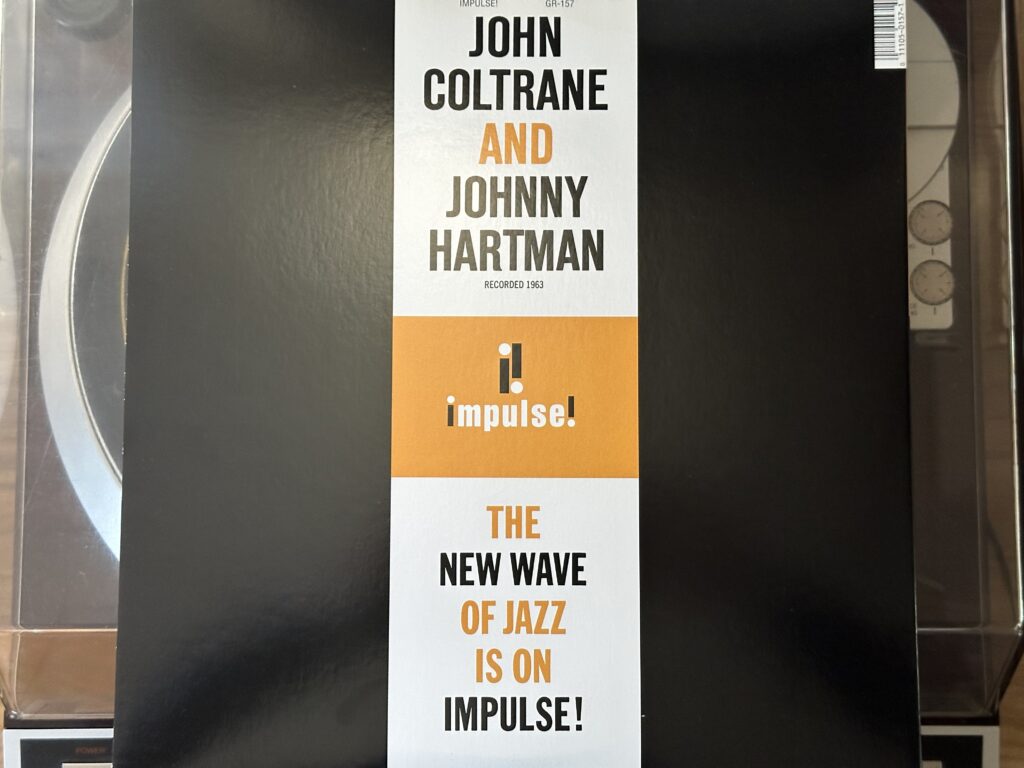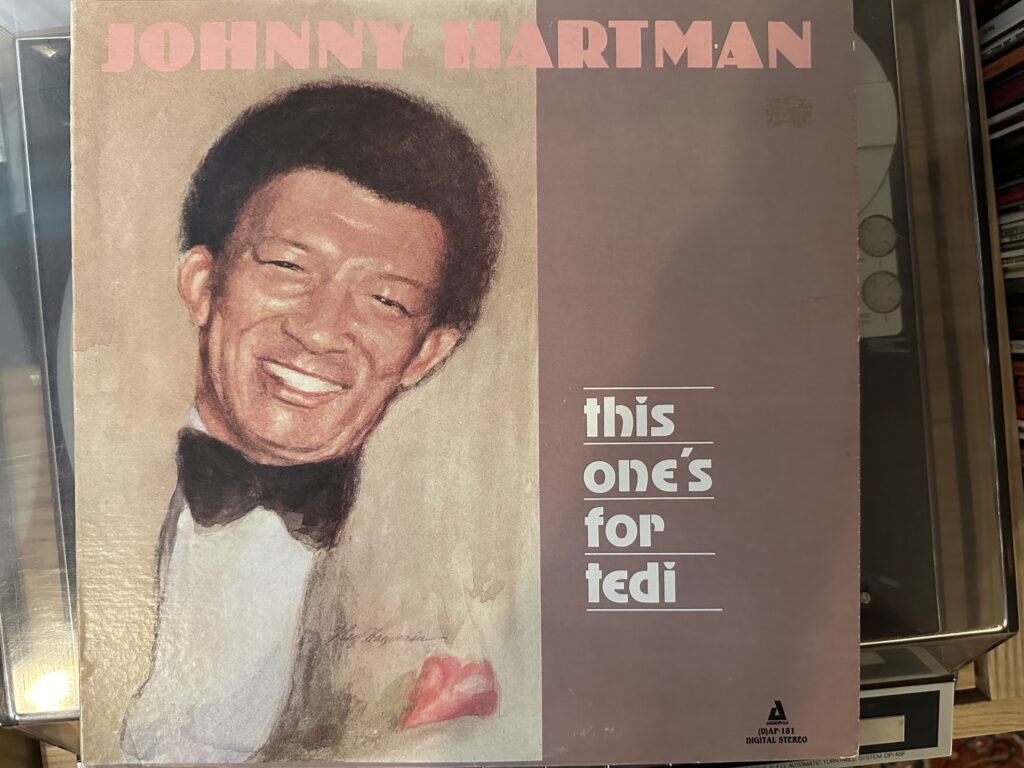
Album of the Week, June 12, 2024
Singers are unique in that their instrument ages with them. For instance, Ron Carter’s bass has no less range than it did when he was a twenty-something playing with Miles. (A flawed comparison, I suppose, since you can hear the effects of age on brass and wind players as their lung capacity and embouchure age.) But with singers you can hear every effect of age on the instrument—even if the singer is as careful a performer as Johnny Hartman.
In 1980, fifteen hears after we last heard him, Hartman was 57 years old—not what you might consider “old” today, but you could definitely hear the almost 20 years of additional age in his voice. The phrases are less carefree, less burnished. And they’re shorter; one of the biggest impacts of his life on his instrument was the emphysema from years of smoking that would claim his life three years later, at Memorial Sloan-Kettering in New York. But they’re still recognizably Hartman, and the way he uses the low range of his voice for emphasis and turns a phrase into gold with dynamics and rubato is still as magical here—even if he leaves you anxious to hear how he’ll get some of the longer phrases across the finish line. The accompaniment is simple, with Lorne Lofsky (who would spend much of the subsequent decade performing with Oscar Peterson) on guitar, Chris Conner on bass, Craig “Buff” Allen on drums, and Tony Monte on piano and arranging. The recording was apparently the first all-digital recording (which was then a desirable thing!) to be made in Canada.
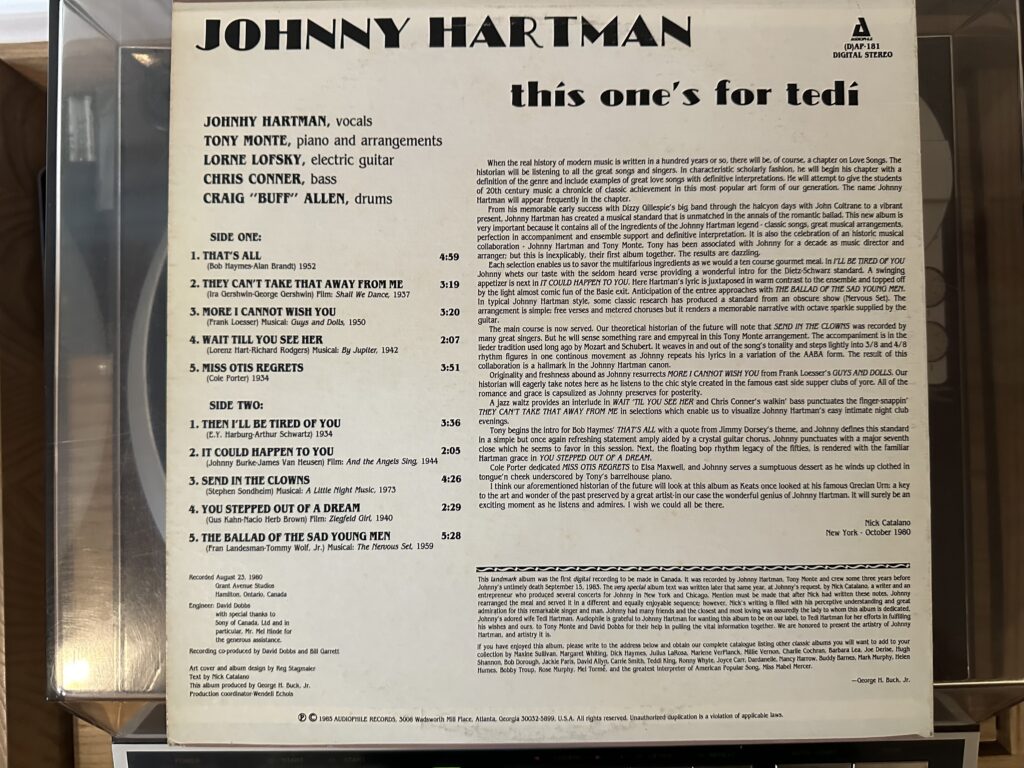
Hartman’s performance of the Alan Brandt/Bob Haymes standard “That’s All” displays some of the weaknesses of his voice as well as the remaining strengths. Hartman’s voice is less present the higher it climbs above the staff, and there is some minor inaccuracy in pitch in a few places. But his lower register is still rich and resonant, and the ensemble provides sympathetic backing that supports rather than overwhelms his voice, particularly from Lofsky’s guitar.
By contrast, his performance of the Gershwins’ “They Can’t Take That Away From Me” is surer, and rendered infinitely cooler by Chris Conner’s walking bass line, which is his only accompaniment for the first verse. Monte gets in a solid verse of a piano solo, cuing up Hartman’s re-entry on the bridge. His swing at “we may never, never meet again” is loose and fluid, and his final “they can’t take that away from me,” which unexpectedly lands on the leading tone, leaving the question, and the chord, teasingly unresolved.
“More I Cannot Wish You” (by Frank Loesser, from Guys and Dolls) has one of the most subtle and affecting performances on the album. With just Monte’s piano behind him, Hartman tells the story of an aging man wistfully wishing that his young beloved will find her own love and “strong arms to carry you away.” Paul McCartney, on his standards album (hilariously entitled Kisses on the Bottom), talked about this song as though it were sung by a father to his daughter. Perhaps; there’s an awful lot of regret in Hartman’s reading that suggests a different relationship.
Rodgers and Hart’s supple “Wait Til You See Her” might be the most accomplished of all the performances on the album. Monte’s piano keeps things moving through in a brisk 6/8, which Hartman’s voice nimbly dances through on the first verse. Lofsky’s solo sneaks in a deft quotation from Sonny Rollins’ “Valse Hot,” moving the arrangement quickly into Hartman’s reprise. It’s a delightful reading and shows that Hartman still had some fire in him.
Cole Porter’s “Miss Otis Regrets” has been covered many different ways, including Kirsty MacColl’s cockeyed waltz (leading into the brilliant headlong swirl of the Pogues’ “Just One of Those Things”) on the Red Hot and Blue compilation. Hartman starts it as a tender ballad, then transitions it into a swinging waltz worthy of Sinatra.
“Then I’ll Be Tired of You,” by Arthur Schwartz and “Yip” Harburg, gives away the central theme of the album as it starts side two: “If my throbbing heart/Should ever start repeating/That it is tired, tired of beating/Then I’ll be tired… then I’ll be tired of you.” It helps to know that Tedi was Hartman’s wife of many years. This is a deeply tender performance by the whole band. The performance seems tenderer in contrast to the more uptempo “It Could Happen to You” (Jimmy Van Heusen and Johnny Burke).
A contemporary review of the album in Fanfare noted that it featured a “haunting fresh rendition of ‘Send in the Clowns’ with a truly singular piano accompaniment by Monte,” and it’s hard to argue. This is one of the standards that I’ve always struggled with, having heard many hackneyed versions thanks to easy listening radio in the early 1980s, but here it’s truly affecting thanks to the depths of Hartman’s voice, his powerful rubato, and the accents from Monte’s piano.
“You Stepped Out of a Dream,” by Nacio Herb Brown and Gus Kahn, brings the tempo back up, featuring a briskly brilliant guitar solo from Lofsky. Here Hartman seems weightless, especially on the line “Have you all to myself, alone and apart/Out of a dream, safe in my heart.” Only the slightly abrupt end of his final sustained note gives away the great singer’s vocal challenges.
“The Ballad of the Sad Young Men” is the most challenging song, lyrically, on the album. Fran Landesman and Tommy Wolf’s ballad could be read of a piece with the great Sinatra dark ballads on In the Wee Small Hours or No One Cares. But Hartman’s voice imbues not only pathos into the song (“Sad young men are growing old/That’s the saddest part”) but also benediction (“Misbegotten moon shine for sad young men/Let your gentle light guide them home again”), before the final “All the sad young men” betrays a slight smile in Hartman’s voice as he looks back at the inevitable dramas of youth from the perspective of age.
Hartman’s passing came at something of an inflection point in jazz song, as the old guard of singers were retiring, passing the torch, and passing on. My highly selective survey jumps forward next time to some folks who are carrying the art along in some very distinctive ways.
You can hear this week’s album here:

